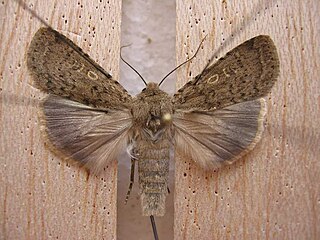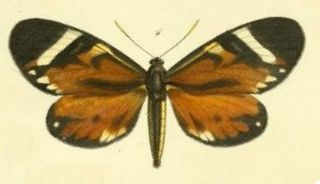Related Research Articles

Drosophila is a genus of flies, belonging to the family Drosophilidae, whose members are often called "small fruit flies" or pomace flies, vinegar flies, or wine flies, a reference to the characteristic of many species to linger around overripe or rotting fruit. They should not be confused with the Tephritidae, a related family, which are also called fruit flies ; tephritids feed primarily on unripe or ripe fruit, with many species being regarded as destructive agricultural pests, especially the Mediterranean fruit fly.

The green neon tetra is a freshwater fish of the family Characidae of order Characiformes. It is native to the upper Orinoco and Negro Rivers in South America.

Drosophila simulans is a species of fly closely related to D. melanogaster, belonging to the same melanogaster species subgroup. Its closest relatives are D. mauritiana and D. sechellia.
The Drosophila melanogaster species subgroup contains 9 species of flies, including the best known species Drosophila melanogaster and D. simulans. The subgroup belongs to the Drosophila melanogaster species group within the subgenus Sophophora.
The mechanisms of reproductive isolation are a collection of evolutionary mechanisms, behaviors and physiological processes critical for speciation. They prevent members of different species from producing offspring, or ensure that any offspring are sterile. These barriers maintain the integrity of a species by reducing gene flow between related species.
Utricularia simulans, the fringed bladderwort, is a small to medium-sized, probably perennial, carnivorous plant that belongs to the genus Utricularia. U. simulans is native to tropical Africa and the Americas. It grows as a terrestrial plant in damp, sandy soils in open savanna at altitudes from near sea level to 1,575 m (5,167 ft). U. simulans was originally described and published by Robert Knud Friedrich Pilger in 1914.

Calochortus simulans is a California species of flowering plant in the lily family known by the common name San Luis Obispo mariposa lily, not to be confused with the San Luis mariposa lily C. obispoensis.

Rhyacia simulans, the dotted rustic, is a moth of the family Noctuidae. The species was first described by Johann Siegfried Hufnagel in 1766. It is found in most of Europe, south to Morocco, Algeria and Tunisia, east to Turkey, the Caucasus, Tomsk and Minusinsk.
The Dulzura kangaroo rat, or San Diego kangaroo rat is a species of rodent in the family Heteromyidae. It is found in Baja California, Mexico, and in the Colorado Desert and elsewhere in California in the United States. It is a common species and the IUCN has assessed its status as being of "least concern".
Alvania simulans is a species of minute sea snail, a marine gastropod mollusk or micromollusk in the family Rissoidae.

Erechthias simulans is a species of fungus moth. It is here considered to belong to the somewhat controversial type genus of its subfamily Erechthiinae, though even fairly recently some authors have proposed to retain other genera such as Decadarchis separate from Erechthias. Decadarchis, with E. simulans as type species, would in fact contain this moth and its closest relatives, regardless whether it is recognized as full genus or as subgenus. These relatives are generally held to be a group of mainly Polynesian species. E. simulans has also been mistaken for a species of the closely related genus Comodica; while the delimitation of this versus Erechthias/Decadarchis is not universally agreed upon, E. simulans is not included in Comodica anymore by modern authors.

Duboisvalia simulans is a moth in the Castniidae family. It is found in Colombia, Bolivia, Venezuela, Peru and Brazil.
Jacques Géry was a French ichthyologist. He was also a scientist and a Doctor of Medicine.

Pterolophia is a genus of longhorn beetles of the subfamily Lamiinae, containing the following species:

Pterolophia melanura is a species of beetle in the family Cerambycidae. It was described by Francis Polkinghorne Pascoe in 1857. It has a wide distribution in Asia.
Pterolophia gibbosipennis is a species of beetle in the family Cerambycidae. It was described by Maurice Pic in 1926.
Pterolophia instabilis is a species of beetle in the family Cerambycidae. It was described by Per Olof Christopher Aurivillius in 1922. It is known from Seychelles.
Pterolophia guineensis is a species of beetle in the family Cerambycidae. It was described by James Thomson in 1864, originally under the genus Alyattes.

Ephemera simulans is a species of mayfly. It is commonly found throughout the United States. The species is used for fly fishing.
References
- ↑ BioLib.cz - Pterolophia simulans. Retrieved on 8 September 2014.